Hazardous Waste Symbols
03
February,
2023
6 MINUTE READ

Symbols and pictograms are the fastest, most efficient and reliable way to communicate warnings. People comprehend the meaning of symbols much quicker than they do text.
There are many types of hazard warning symbols. You may be wondering which ones provide a warning about hazardous waste. First, we need to understand the definition of hazardous waste. The Environmental Protection Agency (EPA) defines Hazardous Waste as:
Hazardous waste is waste that is dangerous or potentially harmful to our health or the environment. Hazardous waste can be liquid, solid, gas, or sludge. It can be discarded commercial products, like cleaning fluids or pesticides, or the by-products of manufacturing processes
What Makes a Material Hazardous?
The EPA has a number of standards that make identifying hazardous waste easy, without the need to perform laboratory testing. However, for the purposes of labeling, understanding the EPA's four basic characteristics of hazardous waste is important. By knowing these you'll know which hazardous waste symbol should be included on the label. The following are the definitions provided by the EPA (note that the EPA does not regulate radioactive waste):
- Ignitability - Ignitable wastes can create fires under certain conditions, are spontaneously combustible, or have a flash point less than 60 ?C (140 ?F). Examples include waste oils and used solvents.
- Corrosivity - Corrosive wastes are acids or bases (pH less than or equal to 2, or greater than or equal to 12.5) that are capable of corroding metal containers, such as storage tanks, drums, and barrels. Battery acid is an example of a corrosive hazardous waste.
- Reactivity - Reactive wastes are unstable under "normal" conditions. They can cause explosions, toxic fumes, gases, or vapors when heated, compressed, or mixed with water. Examples include lithium-sulfur batteries and explosives.
- Toxicity - Toxic wastes are harmful or fatal when ingested or absorbed. Wastes that contain mercury or lead are toxic wastes. Toxicity is defined through a laboratory procedure called the Toxicity Characteristic Leaching Procedure (TCLP). The TCLP helps identify wastes likely to leach concentrations of contaminants that may be harmful to human health or the environment.
The EPA has made identifying many hazardous wastes easy by classifying wastes into four general categories. This eliminates the need for every workplace to individually test their wastes. The four categories of EPA hazardous waste are:
- Listed Wastes: These are wastes the EPA has determined are hazardous based on EPA testing. The wastes are identified based on the source of the waste. The lists include the F-list (wastes from common manufacturing and industrial processes), K-list (wastes from specific industries), and P- and U-lists (wastes from commercial chemical products).
- Characteristic Wastes: These are wastes that do not meet any of the listings above but they have one of the four characteristics of hazardous waste regulated by the EPA: ignitability, corrosivity, reactivity, or toxicity.
- Universal Wastes: These are specific objects that, when disposed of as waste, are hazardous or have hazardous components. These include batteries, pesticides, mercury-containing equipment such as thermostats, and lighting (lamps) such as fluorescent bulbs.
- Mixed Wastes: This is waste that contains both radioactive and hazardous waste components.
In addition to these, there are hazardous radioactive wastes and hazardous biological wastes. All of these need to be labeled correctly, with the correct hazardous waste symbol.
Hazardous Waste Symbols
Once the type of hazardous waste has been identified, and its characteristics are known, the correct labeling with the appropriate hazardous waste symbols can be applied. Many hazardous waste symbols may also be used on various other types of labels. Use of these symbols identifies a hazard, but it may not be specific to hazardous waste.
The EPA regulates hazardous waste in the U.S. and requires labeling of hazardous waste containers. In many cases, except for bio-waste, there are no symbols required on EPA labels. Symbols communicate information faster and more accurately than text alone. It is common to use symbols on hazardous waste labels and signs to increase effectiveness, and is highly recommended.
The Department of Transportation (DOT) regulates the transportation of hazardous materials, including hazardous waste. The DOT requires that there be placards or labels on vehicles and containers holding hazardous materials that are being transported. The DOT provides the specific designs for those placards. The required placards, along with the DOT symbols, are shown in 49 CFR 172, subpart E. The symbols used on DOT placards for hazardous waste are identified below.
The OSHA Hazard Communication Standard (HCS) requires the labeling of hazardous chemicals in the workplace. These are called Globally Harmonized System (GHS) labels. However, since hazardous waste is regulated by the EPA, the GHS labeling system does not apply to hazardous waste.
Because they clearly communicate hazard information, and provide a standard symbol, the GHS symbols, or ones similar to GHS symbols, are commonly used on hazardous waste containers. Those GHS symbols, as well as the WHMIS symbols used in Canada, are identified below. Note that for use on GHS labels the symbol must be enclosed in a red diamond, and the WHMIS symbols must be enclosed in a circle. Neither the red diamond nor the circle is required on hazardous waste labels in the U.S., so they are not included as a part of some of the symbols shown below.
For the purposes of clear communication we recommend using the appropriate GHS symbol, whenever possible, to identify the hazards of waste.
The International Standards Organization (ISO) also specifies hazard symbols. When an ISO symbol is the same as, or very similar to a symbol being used in North America for hazardous waste, that symbol will be identified below as also being an ISO symbol.
Hazardous Waste Symbols ? Ignitability
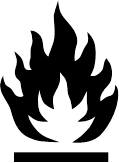 |
 |
| GHS / DOT / WHMIS / ISO Flammable | GHS / DOT / WHMIS / ISO Oxidizers Can burn without air. |
Both of the above symbols identify flammable wastes and both are symbols specified by OSHA's Hazard Communication Standard (HCS) for GHS labels. On hazardous waste labels and signs they are often combined with the no smoking symbol. Multiple symbols may be included on a label to indicate multiple hazards, as well as prohibited activities.
Hazardous Waste Symbols ? Corrosivity
 |
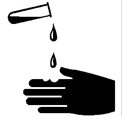 |
| GHS / DOT / WHMIS / ISO Corrosive |
Corrosive (Not Recommended) |
There are two symbols commonly used to identify corrosive wastes. The symbol on the left is used for GHS and WHMIS labels, and it commonly appears on hazardous waste labels identifying corrosives. This is the internationally recognized standard symbol for corrosives and is the preferred symbol. The other symbol may be seen on hazardous waste containers, or marking locations where there corrosive hazardous waste is stored. While you may encounter the second symbol, it has become outdated and should no longer be used.
Hazardous Waste Symbols ? Reactivity
 |
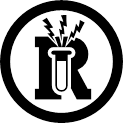 |
| GHS Explosive |
WHMIS dangerously reactive material |
These are materials that are violently reactive or explosive under normal conditions. The recommended GHS symbol is shown on the upper left. "WHMIS" is the acronym for the Workplace Hazardous Materials Information System used in Canada.
Hazardous Waste Symbols - Toxicity
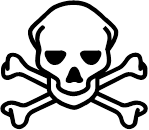 |
 |
 |
 |
| GHS / DOT / WHMIS / ISO Toxic ? life threatening even in small amounts. Inhalation hazard. |
GHS Hazardous to aquatic life and the environment. |
GHS A serious health hazard. Examples of hazards include: carcinogens, mutagenicity, and reproductive toxicity. |
GHS This symbol is commonly used to indicate caution in general. Under GHS it is a general warning covering hazards such as irritation, acute toxicity, narcotic effects, or dermal or inhalation sensitizers. |
 |
|||
| WHMIS Toxic, Poisonous or Infectious |
As shown above, OSHA GHS labels have a number of different symbols that indicate a material is toxic. The GHS symbol that should be used on a hazardous waste label depends on the toxicity of the substance being labeled.
For Canada there is a single WHMIS symbol that applies to all levels of toxicity.
The ISO symbol shown above is sometimes seen in the U.S. It identifies a poisonous gas (inhalation hazard).
Hazardous Waste Symbols ? Other
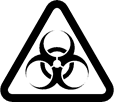 |
 |
 |
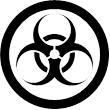 |
 |
|
| EPA / DOT / WHMIS / ISO Biohazard |
ISO 21482 Radiation Hazard Symbol |
WHMIS/GHS / DOT / Compressed Gas |
Two other types of hazardous wastes that are identified by symbols are biohazards (regulated by OSHA and the EPA) and radioactive wastes (regulated by the NRC). The third hazard shown above is compressed gas. Compressed gas falls outside the EPA definition of hazardous waste; compressed gas is hazardous and should be labeled so that people are aware of the hazard.
Hazardous Waste Symbols - NFPA Diamond
The NFPA Diamond is specified under NFPA 704 - "Standard System for the Identification of the Hazards of Materials for Emergency Response." While the hazardous waste symbols we've discussed so far are used to inform workers and the general public about the hazardous properties of wastes, the NFPA diamond is used specifically for providing information to emergency responders.
Emergency responders, such as fire fighters, need to know that hazardous materials are present. They also need to know the type of hazard, and the level of danger each type of hazard presents. This information is provided by the NFPA diamond.
The NFPA diamond has four sections, each having a different color. The colors identify the type of hazard:
- Red ? flammability hazard
- Yellow ? Instability hazard
- White ? Special hazard
- Blue ? Health hazard
Numbers from 0 to 4 identify the hazard level, with 0 being the lowest and 4 being the highest hazard level. The white section will have either an abbreviation or word that identifies any specific hazard presented by the substance.
Subtitle C of The EPA's Resource Conservation Recovery Act creates a cradle-to-grave management system for hazardous waste. The color, format, text, and symbols on a label are crucial to meet your workplace requirements. You can achieve compliance and get custom designed labels in appropriate ANSI colors with DuraLabel custom hazardous waste labels by Duralabel. Manage hazardous waste properly with help from our free guide.
RELATED RESOURCES

BS5609 Compliance and GHS
BS5609 is the British Standard for pressure-sensitive adhesive labels used for marine applications. Also ...
Read
GHS Purple Book
The GHS is described in a book, informally known as the "Purple Book." This book contains information on all ...
Read
Free OSHA GHS Training
OSHA GHS Proposal OSHA mandated changes to its hazard communication standard (HCS), and aligned itself with ...
Read.png)


